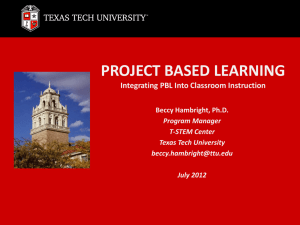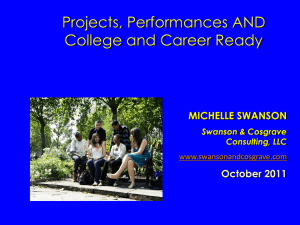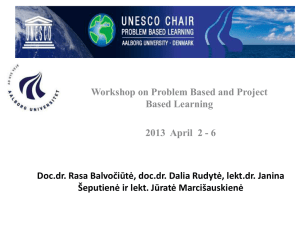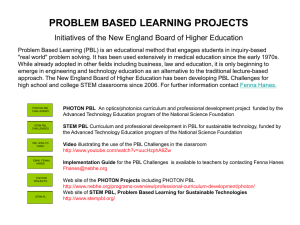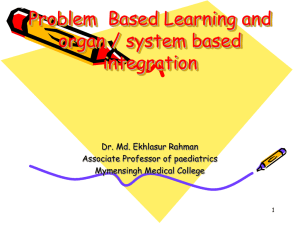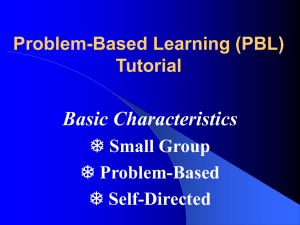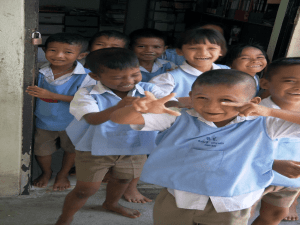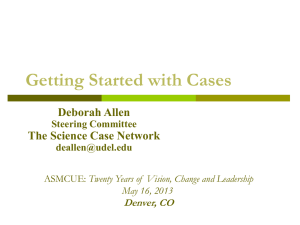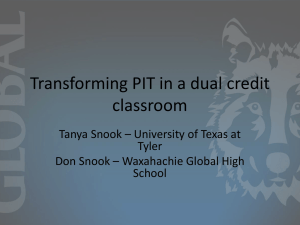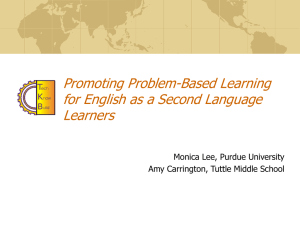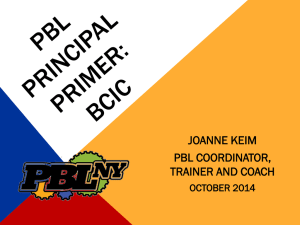Project-Based Learning
advertisement
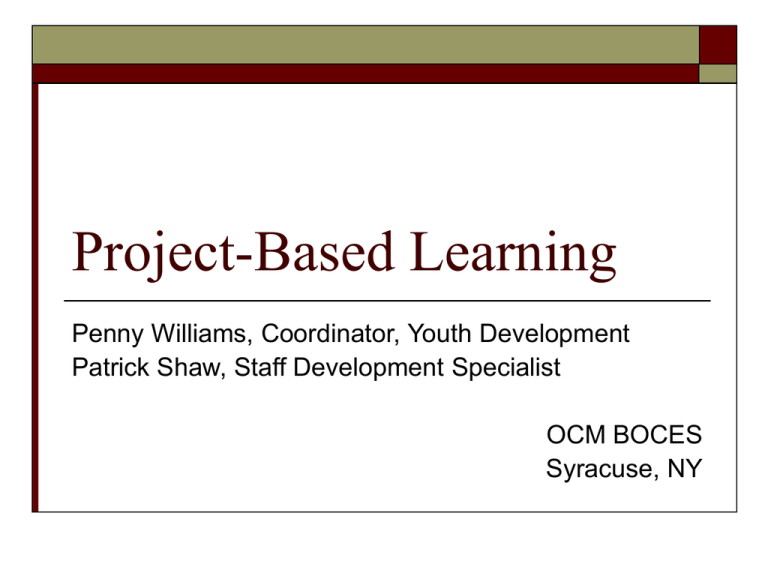
Project-Based Learning Penny Williams, Coordinator, Youth Development Patrick Shaw, Staff Development Specialist OCM BOCES Syracuse, NY Critical Thinking Creativity Collaboration Communication Task Analysis Video: Buck Institute for Education PBL (6:52 mins) Project Based Learning is a teaching method in which students: Engage in a rigorous, extended process of inquiry focused on complex, authentic questions and problems Work as independently from the teacher as possible, and have some degree of “voice and choice” Demonstrate in-depth understanding of academic knowledge and skills Build 21st century skills such as collaboration, critical thinking, creativity and communication Create high-quality products an performances which are presented to a public audience PBL Misconceptions PBL is NOT…the dessert, … PBL is… the main course PBL is NOT…. a string of activities tied together under a theme, concept, time period, culture… PBL is….set of learning experiences and tasks that guide students in inquiry toward answering a central question, solving a problem, or meeting a challenge PBL Misconceptions PBL is NOT: the same as “making something” or hands-on learning” or “doing an activity.” PBL is…often focused on creating physical artifacts, but not always. It must involve other intellectually challenging tasks and products focused on research, reading, writing, discussion and oral presentation. PBL’s Effectiveness: What Experience Tells Us: Classroom Teachers say…. Can work for all kinds of students, with the right support Improves students’ motivation to learn Can be used to teach academic content standards Can include multiple opportunities to integrate technology Helps students see how school connects to the outside world by making learning relevant and meaningful Promotes greater civic participation and global awareness PBL’s Effectiveness: Schools have used PBL effectively in all grades for special purpose: Career/technical education programs; continuation/alternative high school programs; after-school programs; summer school Integrating two or more school subjects and encouraging team teaching Connecting the school to other schools, the community, businesses, and other organizations PBL’s Effectiveness: Researchers have found that a well-designed & well-implemented PBL Can: Be more effective than traditional instruction in increasing academic achievement Increase student motivation and engagement in learning Improve students’ retention of knowledge over time Improve students’ mastery of 21st century skills Be especially effective with lower-achieving students Increase students’ achievement on state-administered, standardized tests PBL 21st Century Skills Why Have a Driving Question? For Students For Teachers Guides Project Work Creates interest and/or the Feeling of Challenge Guides Planning & Reframes Content Standards or Big Ideas Captures & Communicates the Purpose of the Project Initiates and Focuses Inquiry Reminds them “Why we’re doing this today” Criteria for Evaluating Your Driving Question: 1. 2. 3. 4. Will my students understand it? (Bonus:…and find it intriguing) Is it open-ended and does it require a complex answer? To answer it, will my students need to learn important content and skills? Does it focus on an authentic issue, problem or challenge? (Bonus:…and create a local context for the project?) Sources of Inspiration Your Content Standards Your Community Your Students Current Events Real-World Practice/Problem Online Project Libraries Your File Cabinet Your Colleagues Example Entry Events: Field Trip Guest Speaker Film, Video, Website Simulation or Activity Provocative Reading Startling Statistic Puzzling Problem Piece of Real or Mock Correspondence Song, Poem, Art Lively discussion Video: Elementary Example Children Pilot Their Own Learning PBL (8:50 mins) Spotlight Projects to Explore: 9th grade Introductory Science: “Product Comparison” 10th-11th grade Algebra II/Trigonometry: “Projectile Motion” 11-12th grade English and U.S. Government: “Banned in America” 7th grade Life Science: “A Balancing Act” 11th grade U.S. History: “American Archetypes” 11th-12th grade Information Technology/Business/Arts: “Design and Attract” Video: Closure Student Voice PBL (6:52 mins) Questions & Comments: pwilliams@ocmboces.org pshaw@ocmboces.org Projects: LIMITED AMBITIOUS Duration 10-15 contact hours Breadth 1 Subject: Few Standards Interdisciplinary: Several Standards Basic Extensive Classroom Community/World One Teacher Several Teachers, outside experts, community Classroom Experts, Community, World, web Teacher-defined; Tightly managed Co-Defined and managed Technology Setting Who’s Involved Audience Student Autonomy 40+ contact hours Project Packets Team Roster Project Calendar Rubric & Assessments Checklist of Requirements Templates for Contracts, lists, etc. Presentation/Exhibition Schedule Resource List Who Would you Put on a Team? Social Factors

